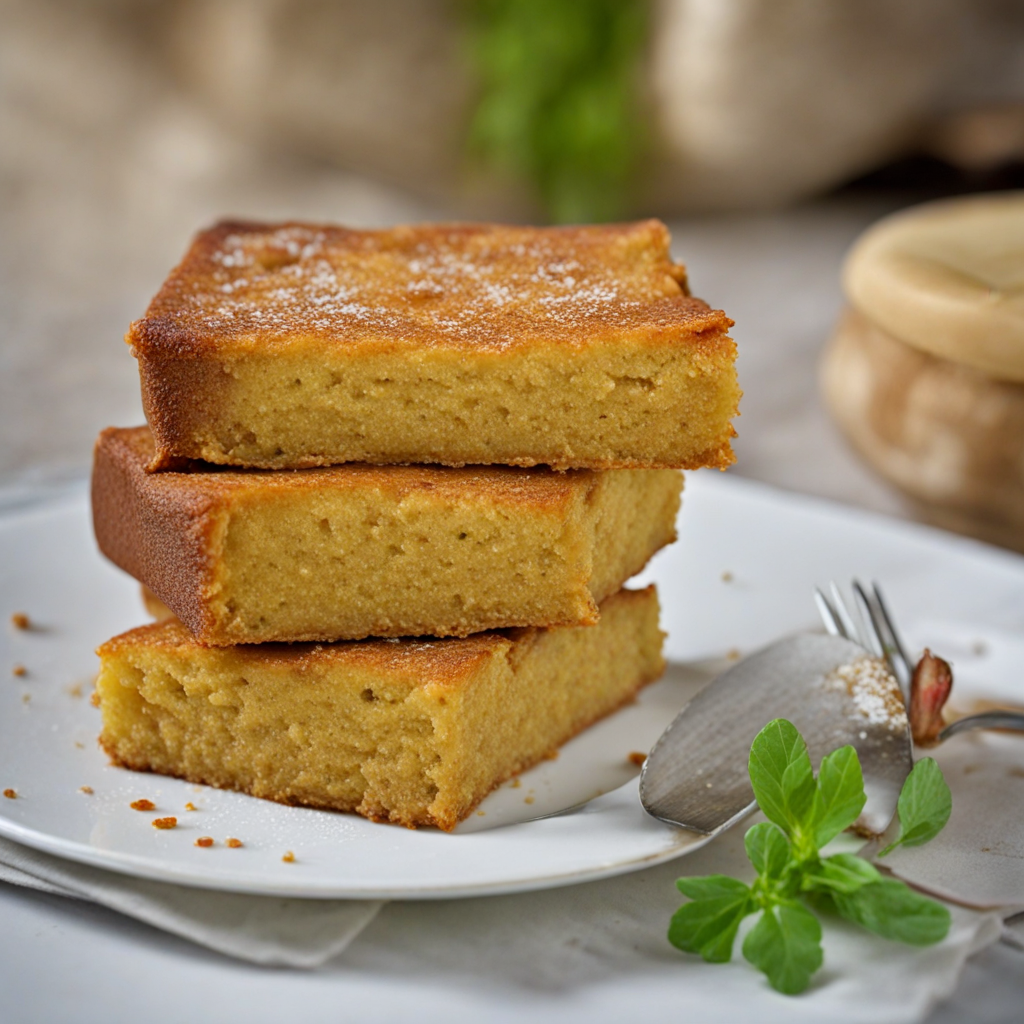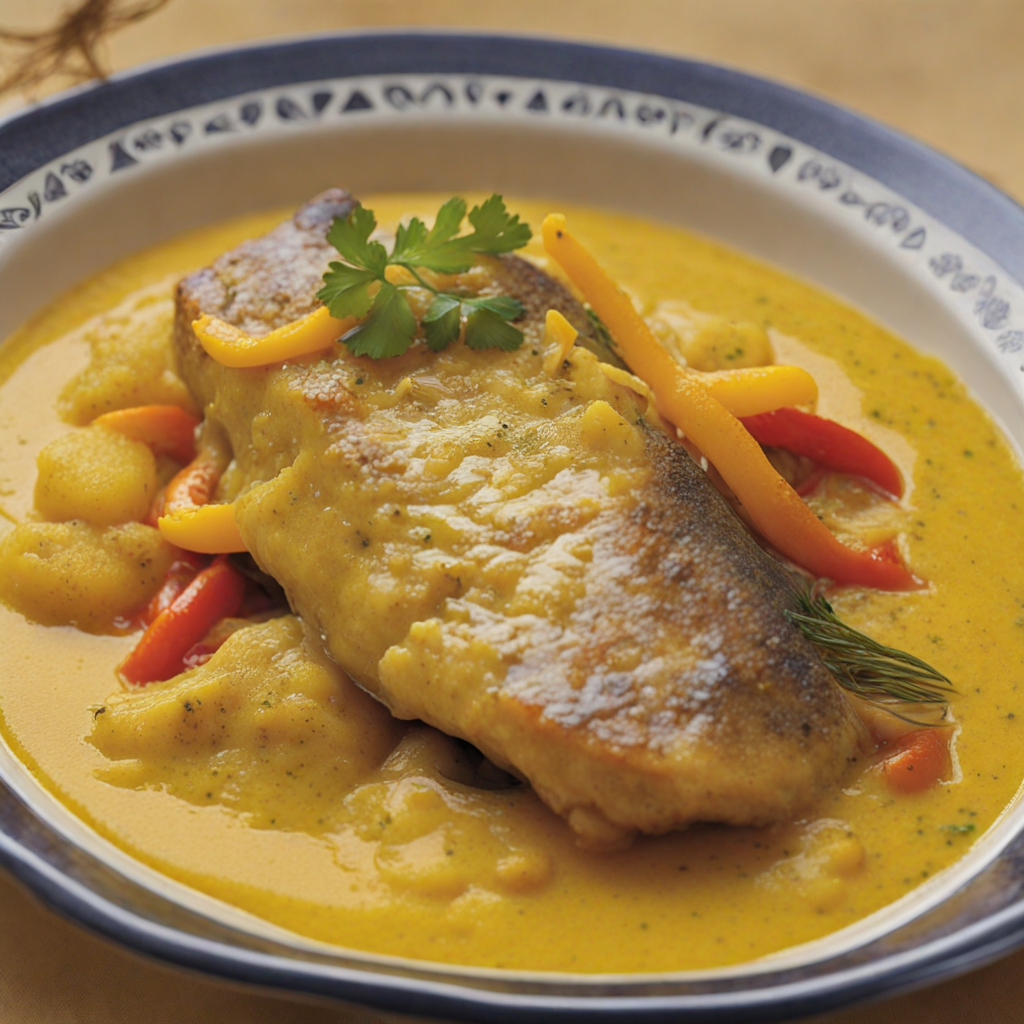Calentita
Calentita is a traditional dish from Gibraltar that embodies the region's rich culinary heritage, influenced by Mediterranean and North African flavors. At its core, Calentita is a savory chickpea flour pancake, often compared to socca from Nice or farinata from Italy. The key ingredients include chickpea flour, water, olive oil, and a pinch of salt. The mixture is poured into a hot, oiled pan and baked until it forms a golden crust while remaining soft and slightly creamy on the inside. The simplicity of the ingredients allows the natural nuttiness of the chickpea flour to shine through, making it a delightful option for those seeking a unique taste experience. This dish is often enhanced with various toppings and spices that can elevate its flavor profile. Many enjoy Calentita with a sprinkle of black pepper, fresh herbs, or even a drizzle of olive oil for added richness. In some variations, ingredients like garlic, onion, or even cheese are incorporated to provide an extra layer of depth. The texture is both crispy on the outside and tender within, making it a perfect snack or appetizer. Served warm, Calentita is not only comforting but also versatile, allowing for customization according to personal preferences and regional influences. Calentita is a beloved staple in Gibraltar, often enjoyed at local gatherings or street food stalls. Its historical roots date back to the 19th century, and it has become a symbol of Gibraltarian culture and community. Whether enjoyed on its own or as part of a larger meal, Calentita offers an inviting taste of Gibraltar that invites food lovers to explore the intersection of tradition and flavor. Its unique character and satisfying nature make it a must-try for anyone looking to broaden their culinary horizons.
How It Became This Dish
Calentita: A Culinary Gem of Gibraltar Calentita, a traditional dish of Gibraltar, is much more than just a meal; it is a symbol of the territory's rich cultural tapestry, melding influences from Mediterranean and North African cuisines. This simple yet flavorful dish has a history that reflects the diverse heritage of the people of Gibraltar, making it a fascinating subject of study for food historians and culinary enthusiasts alike. #### Origins: A Blend of Cultures The origins of Calentita can be traced back to the 18th century, during a period of significant social and economic change in Gibraltar. Located at the southern tip of the Iberian Peninsula, Gibraltar has been a melting pot of cultures due to its strategic location as a gateway between Europe and Africa. The British took control of Gibraltar in 1704 during the War of Spanish Succession, leading to an influx of various nationalities including Spanish, British, Italian, Moroccan, and Genoese immigrants. Calentita is believed to have its roots in the ancient Italian dish known as "farinata," which is made from chickpea flour, water, and olive oil, and is traditionally baked in a wood-fired oven. The dish likely made its way to Gibraltar through the Genoese settlers, contributing to the local culinary landscape. Over time, the recipe adapted to the ingredients and preferences of the local population, resulting in the unique version that is enjoyed today. #### Ingredients and Preparation At its core, Calentita is made from a simple mixture of chickpea flour (also known as gram flour), water, olive oil, and salt. The batter is poured into a greased baking tray and baked until it forms a golden-brown crust. The texture is somewhat akin to that of a frittata, with a slightly crispy exterior and a soft, creamy interior. Some variations of Calentita incorporate additional ingredients such as onions, garlic, and spices, enhancing its flavor profile. The dish is typically served warm, often accompanied by a drizzle of olive oil or a sprinkle of coarse sea salt. It can be enjoyed on its own as a snack or served alongside other dishes, making it a versatile option for any meal. The simplicity of its ingredients reflects the resourcefulness of Gibraltarians, who have historically relied on local produce and pantry staples. #### Cultural Significance Calentita holds a special place in the hearts of Gibraltarians, transcending its role as mere sustenance. It is often associated with communal gatherings and celebrations, serving as a reminder of the community's shared history and identity. The dish is a staple at local festivals, particularly during the "Calentita Festival," where Gibraltarians come together to celebrate their culinary heritage with live music, dance, and, of course, plenty of Calentita for all to enjoy. The preparation of Calentita also reflects a sense of tradition passed down through generations. Families often have their own secret recipes, with variations that may include family heirlooms in the form of specific herbs or spices. This familial aspect of Calentita creates a bond within the community, as individuals share their unique interpretations of the dish while preserving its historical roots. #### Development Over Time As Gibraltar has evolved, so too has Calentita. The dish has remained a staple in local cuisine, adapting to changing tastes and culinary trends. In the modern era, chefs and home cooks alike have experimented with Calentita, introducing innovative flavors and presentations. Today, it can be found in various forms, from traditional recipes served in local taverns to gourmet interpretations in upscale restaurants. The rise of the food tourism industry has further contributed to the popularity of Calentita. As visitors flock to Gibraltar to experience its unique blend of British and Mediterranean cultures, they are often introduced to local delicacies, with Calentita being a must-try. This exposure has not only elevated the dish's status but has also prompted a renewed interest in the culinary traditions of Gibraltar. In recent years, there has been a greater emphasis on sustainability and local sourcing within the culinary community. Many chefs are now focused on using organic, locally sourced ingredients, which aligns perfectly with the ethos of Calentita. By championing local produce, the dish becomes a canvas for showcasing the best of Gibraltar's agricultural offerings, further intertwining food with cultural pride. #### Conclusion: A Legacy of Flavor Calentita is more than just a dish; it is a reflection of Gibraltar's unique identity and a testament to its diverse cultural heritage. From its humble origins as a simple chickpea flour bake to its status as a beloved staple, Calentita has successfully traversed the currents of history, adapting to the needs and tastes of the people while maintaining its core essence. As Gibraltar continues to evolve, so too will Calentita, but its roots in the community will remain strong. The dish serves as a reminder of the importance of food in shaping cultural identities and fostering connections among people. Whether enjoyed at a local festival or served at a family gathering, Calentita remains a cherished part of Gibraltar's culinary landscape, a delicious testament to the resilience and creativity of its inhabitants. In the end, Calentita encapsulates the spirit of Gibraltar—an enduring connection to the past, a celebration of diversity, and a commitment to community. As more people discover this delightful dish, its legacy will undoubtedly continue to thrive, preserving the flavors and stories of Gibraltar for future generations to enjoy.
You may like
Discover local flavors from Gibraltar







